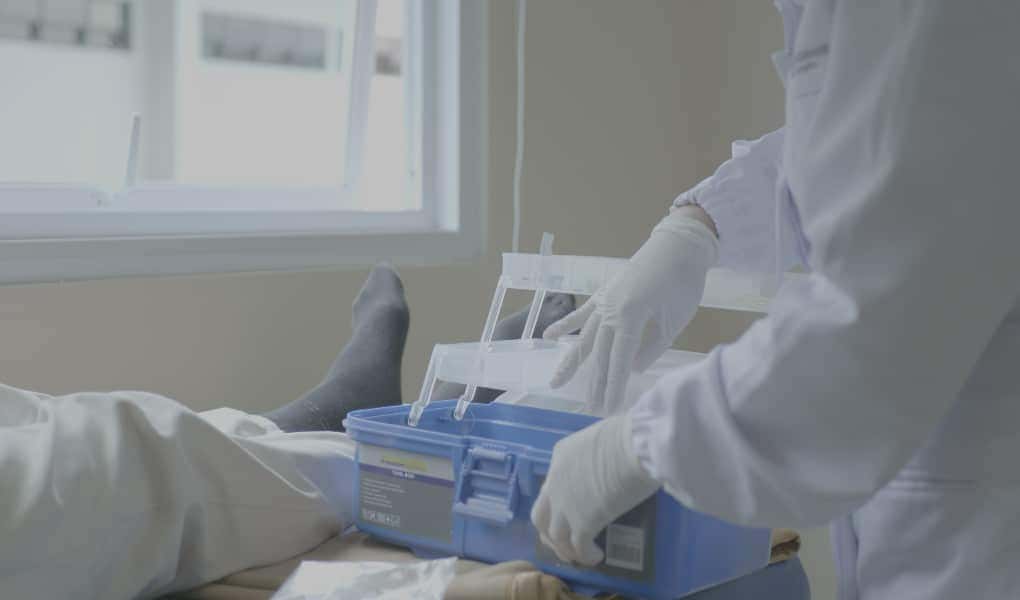Case Summary
This case involves a patient who underwent a left total hip arthroplasty (hip replacement) to repair damage caused by severe osteoarthritis. Following the surgery, the physician prescribed anticoagulant medications. The patient developed left leg and foot pain and swelling. Due to the pain and swelling, the patient visited the emergency room eight days after surgery for evaluation. The emergency room found the patient to be neurovascularly intact at that time. Additionally, a Doppler ultrasound was negative for deep vein thrombosis.
The patient followed up with two scheduled orthopedic post-operative visits. He also had one unscheduled visit 12 days after surgery. His chief complaint of swelling and pain was consistent throughout his postoperative course. The patient alleges that despite his numerous visits and complaints, no one performed a vascular examination.
The patient was later found to have a femoral artery occlusion, which caused acute limb ischemia. As a result of the continued lack of blood flow to the limb, the patient required a below-the-knee amputation of the left leg.
Case Theory
A DVT (deep vein thrombosis) is a blood clot that forms in one of the deep veins and is commonly found in the legs. The clot restricts blood flow, causing damage to the limb. DVT can be fatal if the clot moves or breaks off, which can cause a stroke or pulmonary embolism.
There are several clinical symptoms of a DVT. Physicians often use ultrasound imaging to confirm, diagnose, and locate the clot. However, the Doppler ultrasound failure rate for DVT of the femoral artery can be up to 60% with a general accuracy of 77%. The test accuracy is largely dependent on the skill of the technician. In this case, the persistence of clinical symptoms required additional investigation.
The prevention and treatment of blood clots after hip and knee replacement surgery is a well-established component of patient recovery. Joint replacement patients are at the highest risk for developing deep vein thrombosis 2 to 10 days after surgery. These specific patients also remain at risk for clots for at least three months post-surgery.
Healthcare professionals are provided extensive training on preventing the occurrence of blood clots in patients. Due to the high risk, surgeons prescribe a combination of treatments including exercise and physical therapy beginning the first day after surgery and continuing for several months. Compression stockings and anti-clotting medicine to reduce the body’s ability to form blood clots are the standards of care in most patients.
In this case, the standard of care departure and inappropriate management of left leg pain and swelling post-hip replacement led to life-changing damages including acute ischemia of the left lower extremity that resulted in a below-the-knee amputation.
Expert Witness Specialties
Orthopedic Surgery
An orthopedic surgeon with a specialty in hip replacement can opine regarding the standard of care as it relates to post-operative management. This expert can also speak to the warning signs that the physician ignored in this case as well as the proper course of action and patient prognosis.
Questions for Expert Witnesses
- What is the standard of care for all postoperative hip replacement patients?
- What is the recovery rate for timely diagnosed DVT in a hip replacement patient?
- What preventative measures do physicians take to ensure surgical patients don’t suffer clots?
- What is the failure rate for Doppler Ultrasound DVT screening?
- When is further testing warranted in a suspected DVT patient with a negative ultrasound?
- What impact does below-the-knee amputation have on the patient’s medical prognosis and quality of life?
Expert Witness Involvement
Here is what the orthopedic surgery expert in this case had to say:
Expert Witness Response E-011984
I perform total hip arthroplasties every week and have done so for the past 25 years. A postoperative patient usually has an arterial examination to check if they have good circulation. After that, a doppler on their arterial and venous slides should be completed. It is also important to check for any arterial collusion and examine the patient's arterial pulses, feet, nail beds, and any potential cast lines.
About the author
Erin O'Brien
Erin O'Brien is a senior medico-legal writer and editor, with 25 years of experience authoring healthcare deliverables. Previously, Erin authored an award-winning column in the health and wellness sector, guest hosted a wellness radio show, and received an FMA Charlie Award for Excellence in Writing.
Erin has reviewed and completed case studies for thousands of medical malpractice cases, both plaintiff and defense nationwide, and was presented the US Chamber of Commerce Best Small Business Blue Ribbon designation. Erin is an experienced Medical Risk Consultant and device start-up project manager. She has consulted for numerous successful healthcare and bio-tech start-ups. After completing a Bachelor of Science degree at the University Of Wisconsin, Erin pursued an educational background in Healthcare Risk Management at the University of South Florida. Erin crafts her work with attention to detail, readability, healthcare marketing regulations, and medical standard of care.



